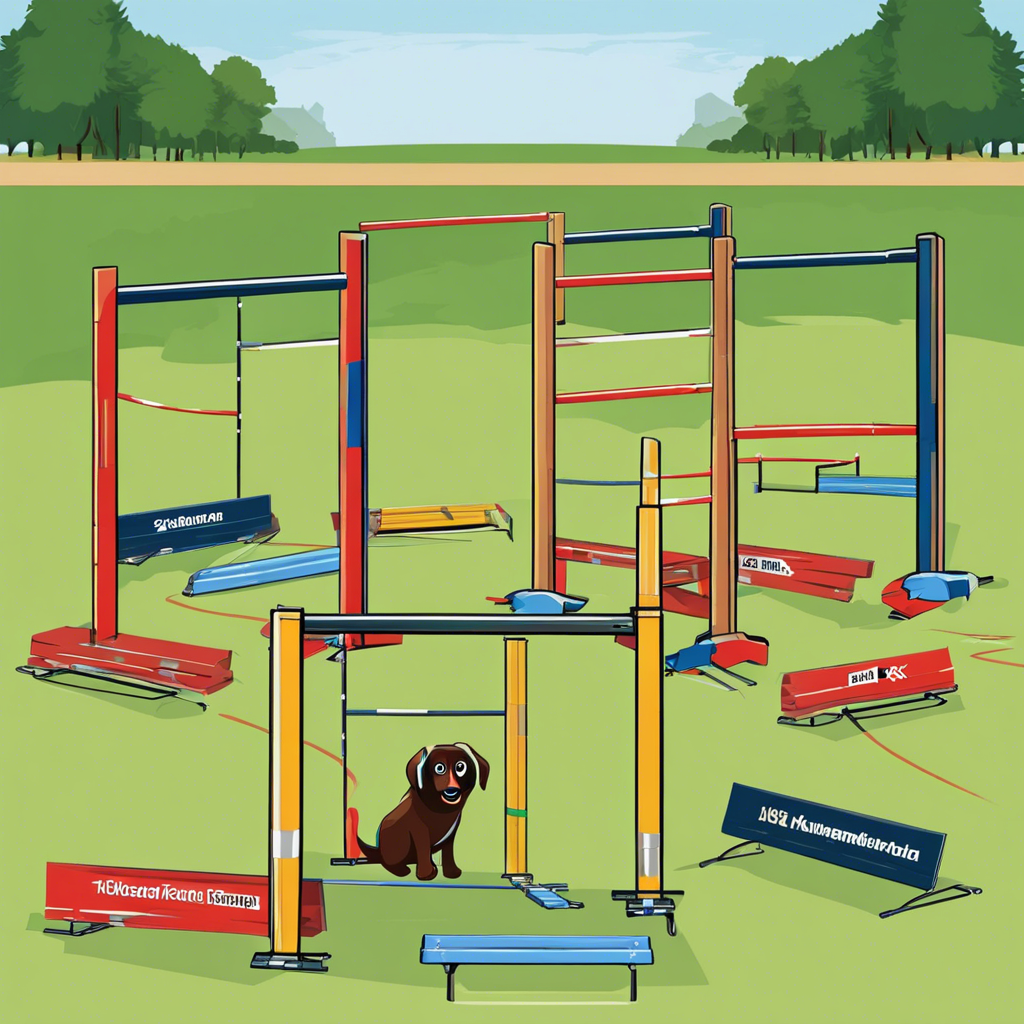Dog agility training is an exciting and challenging sport that tests a canine’s speed, agility, and problem-solving skills. One of the essential equipment used in this training is the humble hurdle, a versatile obstacle that comes in various shapes and sizes. Let’s explore the different types of dog hurdles and how they contribute to an engaging and effective training routine.
Standard Hurdles: The most recognizable type is the standard hurdle, a simple bar-style obstacle that is truly a ‘hurdle’ for the dogs to leap over. These are typically adjustable in height, accommodating dogs of various sizes and training progress. Standard hurdles are great for beginners as they can be set at a lower height and gradually raised as the dog’s jumping ability improves. They are an excellent tool for teaching the fundamentals of jumping and are often the starting point for agility courses.
Panel or Board Hurdles: These hurdles feature a solid panel or board that the dog must clear, providing a different challenge compared to the standard variety. The solid object demands more precision and focus from the dog as they must judge the height and width accurately. This type of hurdle is excellent for honing a dog’s jumping skills and is particularly useful for training dogs for more complex obstacles like the A-frame or dog walk.
Tire Jump: This unique hurdle consists of a tire or hoop that the dog must jump through. It adds a new dimension to the training as the dog must not only clear the obstacle but also judge the center of the hoop to prevent collisions. Tire jumps are great for improving accuracy and are often a favorite among dogs due to their unique and fun design.
Double and Triple Hurdles: For more advanced training, double and triple hurdle sets are employed. These consist of two or three hurdles placed in close proximity, encouraging the dog to maintain a consistent jumping rhythm and speed. They are excellent for building stamina and improving the dog’s ability to gauge distances quickly. This type of hurdle set is often used in advanced agility courses and competitions.
Weave Hurdles: A more complex variant, weave hurdles, are a series of upright poles placed closely together that the dog must navigate by weaving in and out of. This type of hurdle tests the dog’s agility and responsiveness, requiring them to move swiftly while maintaining focus and precision. Weave hurdles are a fantastic way to improve a dog’s overall agility and body control.
Each type of hurdle offers a unique set of challenges and benefits, contributing to a comprehensive agility training program. The beauty of these hurdles lies in their versatility, allowing trainers to create a customized course catering to various skill levels. By incorporating different hurdle types, trainers can keep the training sessions engaging and stimulating, ensuring the dogs remain motivated and enthusiastic.
When selecting hurdles, consider the dog’s size, skill level, and the specific training goals. Starting with basic hurdles and gradually progressing to more complex obstacles is the best approach. This way, you can build your dog’s confidence and skills, ensuring a fulfilling and rewarding agility training experience.
Incorporating a variety of hurdles not only improves your dog’s physical abilities but also enhances their mental agility, problem-solving skills, and overall confidence. This is what makes agility training such a popular and rewarding sport for both the dogs and their owners. So, whether you’re a beginner or an advanced agility enthusiast, there’s a hurdle type to suit every training need, making each session an exciting and productive adventure for you and your four-legged friend.
The world of dog agility training is an exciting one, and with the right equipment, you can create a stimulating and enjoyable environment for your canine companion to thrive in. So, get ready to jump into action and explore the different hurdle types, and you’ll be well on your way to becoming a pro at the agility course!

